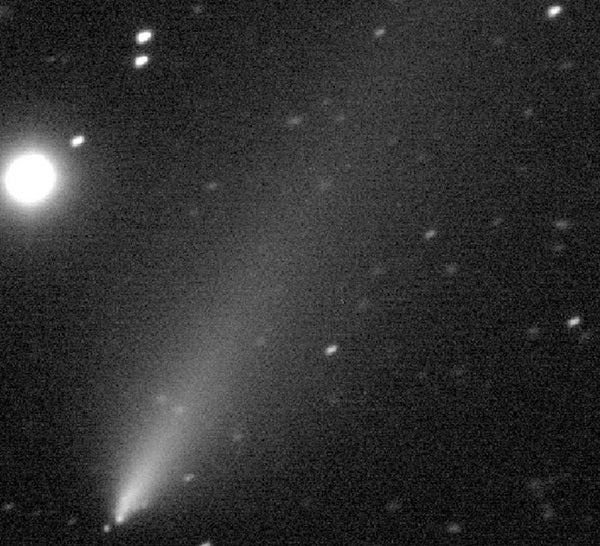Comet 73P/Schwassmann-Wachmann 3 is breaking apart as it passes within 7.3 million miles (11.7 million kilometers) of Earth. The comet orbits the Sun in little more than 5 years and comes closest to Earth about every 16 years. Astronomers using the 200-inch Hale Telescope at Palomar Observatory in California to observe the disintegrating comet have discovered 16 new comet fragments.
The comet, discovered by Arnold Schwassmann and Arno Arthur Wachmann in 1930, split into four fragments during its 1996 passage around the Sun. Since then, Comet 73P has fragmented into dozens of pieces. Astronomers have now observed and imaged one of those pieces, known as fragment R, in great detail.
Astronomer Eran Ofek of the California Institute of Technology assembled Palomar images of fragment R into a movie. Fragment R appears in the movie’s foreground as stars and other celestial objects seem to race by in the background. “Seeing the many fragments was both an amazing and sobering experience,” says Ofek.
Astronomers imaged fragment R for about an hour and a half when the comet approached within 10.6 million miles (17 million km) of Earth. The object’s closest approach to Earth occurred May 12, when one of its fragments passed within 5.5 million miles (8.8 million km) of Earth. That’s pretty close in astronomical terms, but it’s still more than 20 times farther away than the Moon.
In addition to the visible-light images taken at Palomar, the Spitzer Space Telescope captured infrared-light images of Schwassmann-Wachmann, and three observatories now study the comet: NASA’s Chandra X-ray Observatory, the European Space Agency’s XMM-Newton X-ray Observatory, and Japan’s Suzaku X-ray satellite. Chandra, Newton, and Suzaku will study what is left of the comet and its fragments in the X-ray part of the spectrum.
Scientists hope these comprehensive observations will reveal the comet’s chemical structure and give insight into the comet’s breakup.










